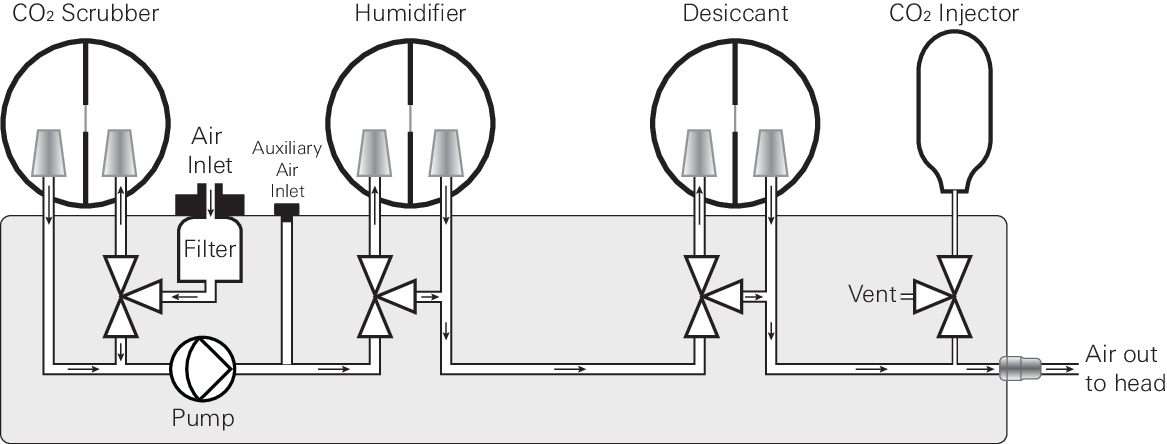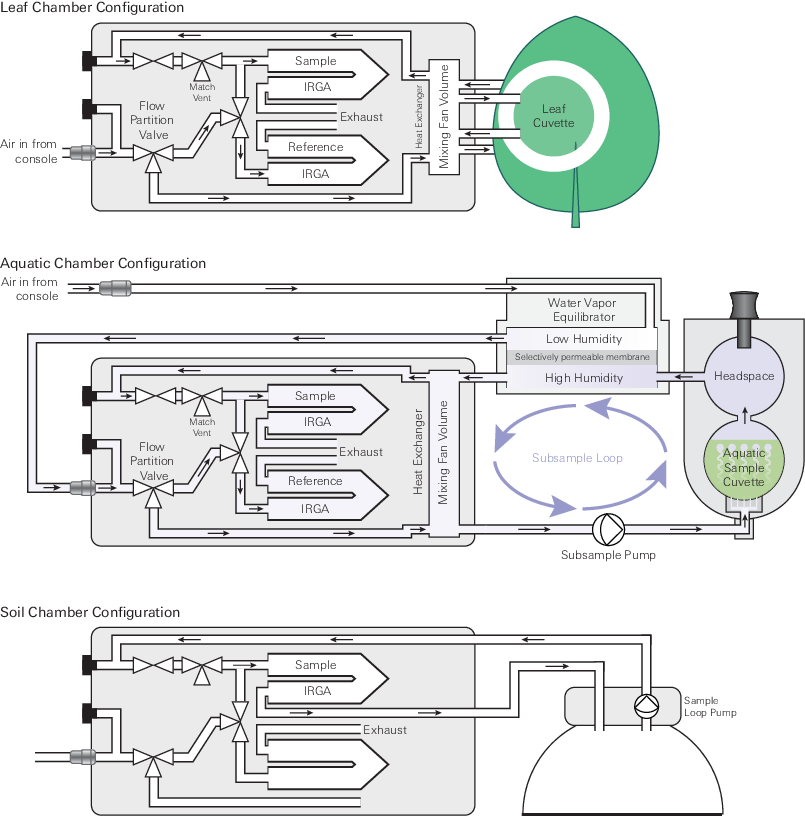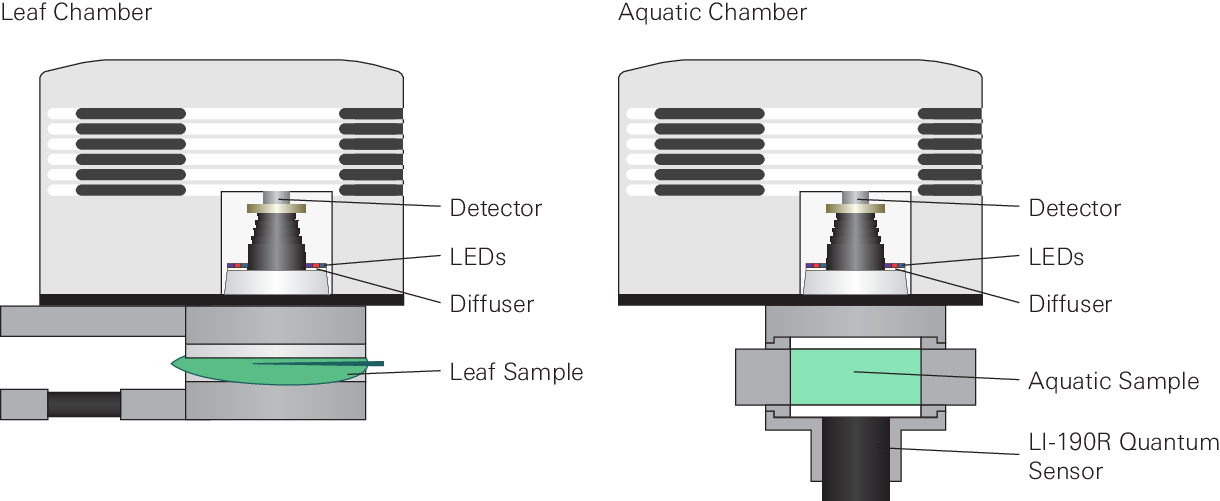Introduction to the LI-6800
The LI-6800 is designed to non-destructively probe processes involved in photosynthesis. With the LI-6800, you can obtain real-time measurements on two distinct, but coupled, photosynthetic processes.
First, the LI-6800 measures uptake of carbon dioxide (CO2) and release of water vapor (H2O) by a sample with high precision infrared gas analyzers (IRGAs). Using a mass balance approach based on input and output of CO2 and H2O from the sample cuvette, the LI-6800 computes net CO2 assimilation (A) and transpiration (E). For leaf-level measurements, additional measured parameters, including leaf temperature, allow the instrument to calculate other physiological parameters, including stomatal conductance (gsw) and intercellular CO2 concentration (Ci).
Second, the LI-6800 quantifies fluorescence yield (ΦF), or re-emission of photons by chlorophyll associated with photosystem II using a detector that is only sensitive to fluorescence generated by a low intensity modulating light source. Fluorescence yield provides information about the light reactions of photosynthesis, including the quantum yield of photosystem II (ΦPSII), electron transport rate (ETR), and many other processes, such as non-photochemical quenching (NPQ). When equipped with a fluorometer, the LI-6800 simultaneously measures gas exchange and chlorophyll fluorescence from the same sample.
Thus, the LI-6800 provides complete, real-time information about both the light reactions and the carbon reactions of photosynthesis. For a detailed description of the leaf-level photosynthetic parameters and how they are measured, go to Theory and equation summary. For details on the aquatic parameters, see Measuring assimilation from aquatic samples,
The chlorophyll fluorescence system
The LI-6800 fluorometer can be used for combined gas exchange and chlorophyll a fluorescence measurements or either one alone. It is used as a fluorometer leaf chamber or as the fluorometer and light source for the aquatic chamber. It uses colored LEDs to emit light and a detector to measure fluorescence.
See Measuring chlorophyll a fluorescence for more details on leaf applications and Pulse-Amplitude Modulation fluorometry for details on aquatic applications.
The gas exchange system
The LI-6800 is an open gas exchange system, which means that the measurements of photosynthesis and transpiration are based on the differences in CO2 and H2O in an air stream that is entering and exiting the leaf cuvette (Figure 1‑1).

The LI-6800 is different from traditional photosynthesis systems for many reasons, but three of the big differences follow: Firstly, the gas analyzers are in the head, right next to the sample chamber. Secondly, the air stream, which is split so it can flow through both the reference and sample gas analyzers, splits in the sensor head rather than the console. This means that conditioned air doesn't flow through two different tubes until the head. And thirdly, the system supports relatively high flow rates so it can rapidly flush chamber air.
These features eliminate plumbing-related time delays and allow the instrument to respond quickly to sample changes. For example, if leaf stomata close, the control system immediately detects the drop in water vapor and can compensate. Similarly, a sudden change in light level will cause an immediate change in photosynthetic rate, which will be detected as a change in the CO2 concentration. The speed of detection is not a function of the system's flow rate, as in traditional systems, since the infrared gas analyzers (IRGAs) are very close to the sample cuvette.
The LI-6800 console provides automated mechanisms for modifying the CO2 and H2O concentrations in incoming air (Figure 1‑2). The instrument can scrub CO2 and water vapor from the air stream, and add both to achieve nearly any concentration desired, making it easy to maintain stable gas concentrations throughout measurements.

The head has valves that partition the flow between the reference and sample gas analyzers and for matching the gas analyzers. The valve mechanism also can restrict the flow to pressurize the leaf chamber slightly, forcing leaks to be outward. The flow path is an open system for both leaf and aquatic applications. It is a closed system for the soil chamber (see Figure 1‑3).


